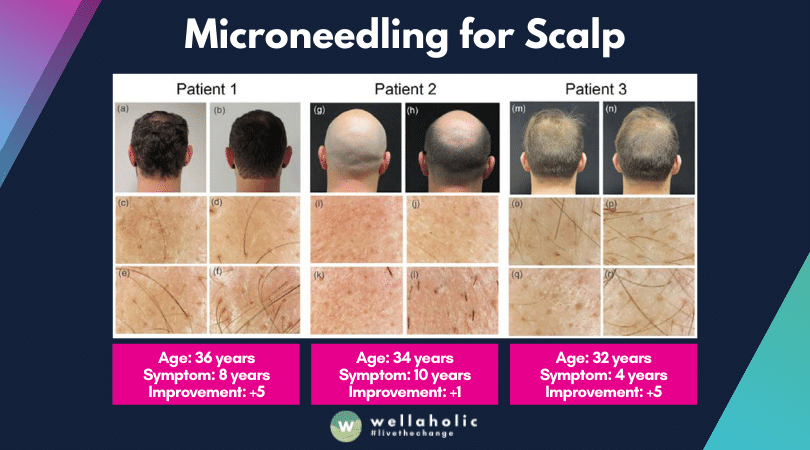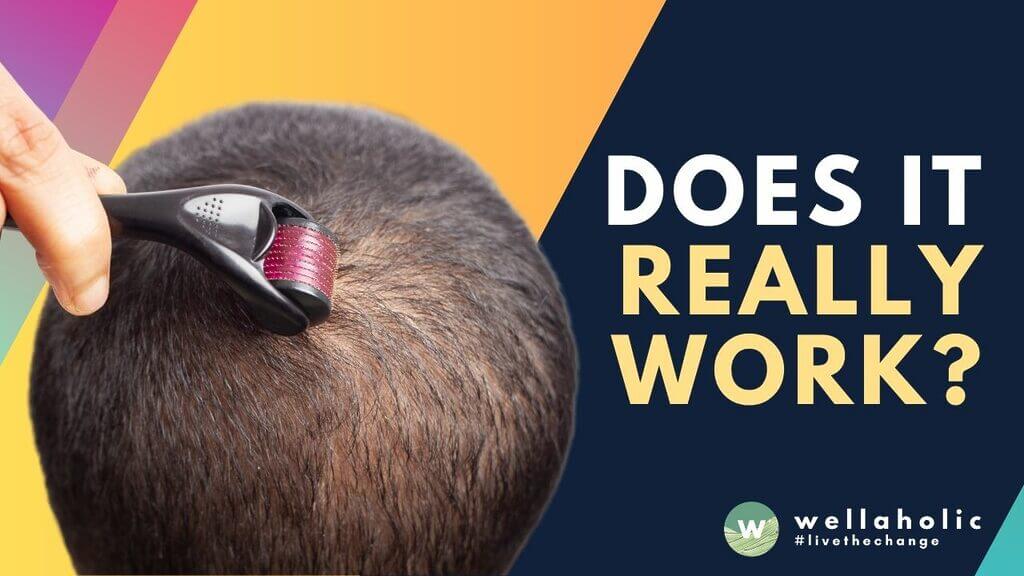
The Ultimate Guide to Microneedling for Hair Growth: Does It Really Work?

Tiny Needles, Big Results 💪
How Microneedling Transforms Hair Loss Treatment
What Is Microneedling? 🔍
A minimally invasive procedure using tiny needles to create microscopic punctures in the scalp, triggering your body’s natural healing response and stimulating hair growth.
Impressive Results Backed By Science ✅
of patients see noticeable hair regrowth
average hair count increase per treatment area
increased effectiveness when combined with topical treatments
months to see significant results
How Microneedling Works 🔄
- Triggers growth factors – Activates your body’s natural healing response
- Boosts blood circulation – Delivers more oxygen and nutrients to hair follicles
- Enhances absorption – Improves effectiveness of topical treatments like minoxidil
- Stimulates collagen – Strengthens hair follicles for thicker, healthier hair
Key Benefits 🌟
Treatment Schedule ⏱️
For optimal results:
- Sessions every 2-4 weeks
- 3-6 months for visible improvements
- Maintenance sessions to preserve results
Questions? Our hair specialists are ready to help you achieve your hair goals!

Introduction: Is Microneedling for Scalp Effective to Treat Hair Loss?
Have you ever wondered if those tiny needles could be the secret to a fuller head of hair?
We’ve seen countless customers at Wellaholic asking about microneedling for hair growth. As aesthetic professionals with years of experience, we’ve closely followed the research and observed the results in our own practice.
In this article, we’ll share our insights on whether microneedling can truly help with hair loss. We’ll explore how it works, what the science says, and what you can realistically expect from this treatment. Our goal is to give you the facts you need to decide if microneedling is right for your hair growth journey.
Alopecia areata, an autoimmune disorder that causes hair loss, is more common among Asians than in other ethnic groups. The incidence of alopecia areata in Asians is estimated to be around 0.2-0.3%, based on research by Wellaholic.
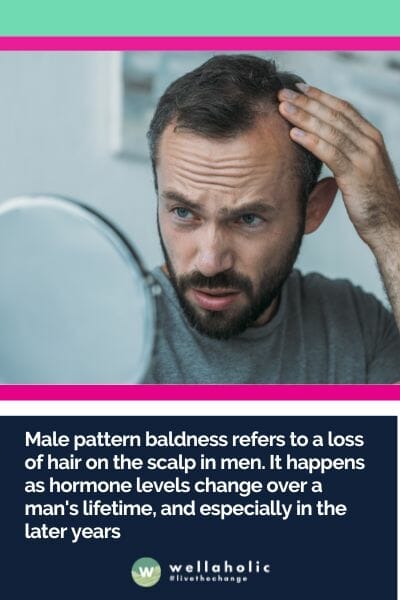
Introduction to Microneedling for Hair Loss
Microneedling, which is what is also offered at Wellaholic to our customers to treat hair loss, involves using a device equipped with fine needles to create tiny punctures in the scalp. This process isn’t just about creating micro-injuries; it’s a strategic technique to stimulate the body’s natural wound healing process. Here’s how I’ve seen it work effectively:
- Stimulating Scalp Health: The minor trauma caused by the needles encourages the scalp to repair itself, potentially rejuvenating hair follicles. It’s a process akin to tricking the scalp into ‘waking up’ and getting back to work.
- Enhanced Product Absorption: These micro-injuries increase the scalp’s absorption capabilities, making it more receptive to topical treatments that promote hair growth.
- Collagen and Elastin Production: Just like with skin, the healing process boosts collagen and elastin production in the scalp, which can strengthen hair follicles and improve hair quality.
- Suitability and Customization: One of the things I appreciate about microneedling is its adaptability. The needle depth and treatment frequency can be tailored to individual needs and scalp conditions.
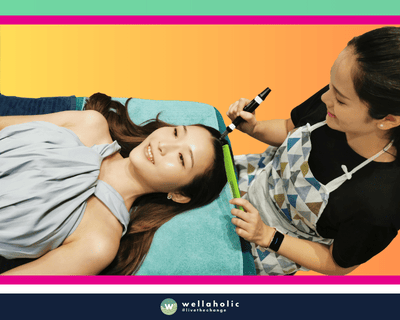
What is the Science Behind Scalp Microneedling for Hair Regrowth?
Scalp microneedling works on the principle of creating micro-injuries on the scalp. Microneedling, by inflicting small wounds on the skin, is believed to rejuvenate the health of hair follicles, stimulating new hair growth. Moreover, it may help thicken thinning hair seen in conditions like androgenic alopecia or male pattern baldness.
These tiny punctures, made by fine needles, serve as a catalyst for the body’s natural healing process. Here’s how it contributes to hair regrowth:
- Stimulation of Stem Cells: The micro-injuries activate stem cells in the hair follicles. This activation plays a crucial role in the regeneration of new hair.
- Enhanced Blood Circulation: The process improves blood flow to the scalp, which is essential for nourishing hair follicles and promoting healthy hair growth.
- Increased Collagen Production: Microneedling boosts collagen production, vital for maintaining the strength and health of the scalp and hair follicles.
- Improved Absorption of Topical Treatments: The micro-channels created by microneedling allow better absorption of topical treatments, making them more effective.
“When it comes to hair growth, microneedling can be a powerful tool when used correctly – allowing you to unlock your hair’s full potential!”
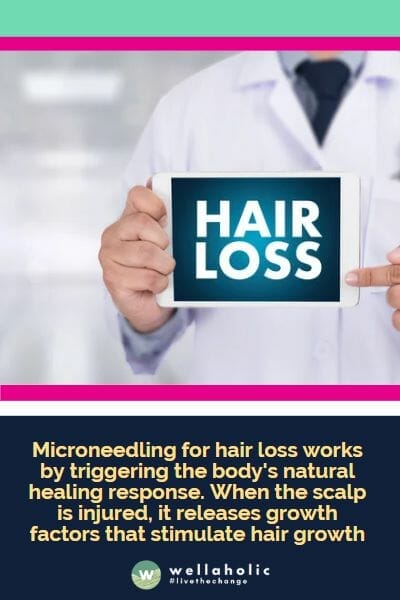
What’s the Research and Studies Supporting Microneedling for Hair Growth?
In my professional experience, the effectiveness of microneedling in promoting hair growth is quite fascinating. Essentially, this process taps into the body’s healing powers. When we perform microneedling on the scalp, it kickstarts a healing reaction.
This includes producing collagen and releasing growth factors, which are key for stimulating hair follicles. This stimulation can lead to better hair growth.
Scientific Evidence for Microneedling’s Superpower
I’ve reviewed multiple studies that back up these benefits. For example, the International Journal of Trichology published a study showing significant improvements in hair growth when microneedling was combined with topical hair loss treatments. Similarly, Dermatologic Surgery featured a study where microneedling, along with standard treatments, notably boosted hair growth in participants.
These studies offer hope, especially for those preferring non-surgical options to combat hair thinning and loss. However, it’s crucial to understand that microneedling is not a cure-all. It’s most effective when used as part of a broader hair growth strategy.
Customer Success Stories
Meet our first customer, a gentleman who embarked on his hair regrowth journey with Wellaholic in March. Over the course of eight months, he experienced a transformation that was nothing short of remarkable.
In the before photos taken in March, you can clearly see the areas of thinning and hair loss. However, as the months passed and he continued with his HairGrow 3X treatments, the change became evident. The after photos taken in November show a significant increase in hair density and coverage.
This customer’s journey is a testament to the effectiveness of Wellaholic’s hair regrowth treatments. His commitment to the treatment plan and our expertise combined to create a success story that speaks volumes about the potential of our hair regrowth treatments.
Read more of Wellaholic’s customers’ success stories in treating hair loss (with actual before and after photos) here.

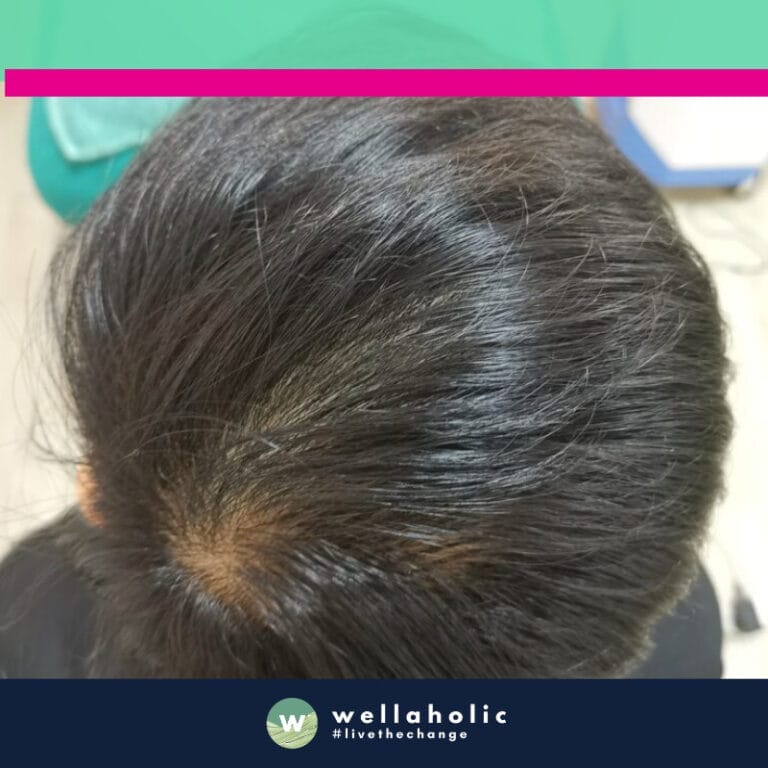

Evidence for Microneedling in Treating Hair Loss
Microneedling Research Focused on Androgenetic Alopecia
Androgenetic alopecia, often referred to as pattern hair loss (affecting both men and women) or male pattern baldness, has been the focus of various research studies investigating the efficacy of microneedling therapy.
2013 Mumbai Study: Minoxidil Combined with Microneedling
The initial research to evaluate the impact of microneedling on hair growth in humans was a 12-week randomized study conducted in Mumbai in 2013 with 100 male participants. Prior to this, promising results had been observed in mice.
The study’s subjects were divided into two groups: one group received minoxidil (an FDA-approved topical hair loss solution), and the other underwent microneedling procedures once weekly in addition to using minoxidil.
According to the research findings, the participants who underwent microneedling and used minoxidil experienced significant changes in hair count and higher overall patient satisfaction. Even eight months post-study, the participants maintained positive results.
2018 Study: Enhanced Hair Growth with Minoxidil and Microneedling
A subsequent study in 2018 echoed these encouraging results. In this research, 68 men were divided into two groups. The first group applied minoxidil hair growth treatment twice daily, and the second group used minoxidil twice daily in addition to undergoing weekly microneedling. Participants who combined microneedling with minoxidil exhibited significantly improved hair growth and satisfaction.

Customer Testimonial for Benefits of Scalp Microneedling
Vijay Ganesh sought treatment at Wellaholic for hair loss and thinning hair, choosing the Scalp RF Microneedling procedure. He was particularly impressed with his therapist, Khanie, who he described as experienced and hospitable, contributing to a wonderful microneedling session. Vijay was able to see results after several sessions of scalp microneedling treatments over the period of two to three months.
Without feeling pressured to buy packages, Harsharen experienced significant improvements in her skin’s texture and appearance. Encouraged by these results, she expanded her treatments to include SHR and fat freeze, further enhancing her satisfaction with our services.
Read Actual Review by Customer
The therapist Khanie is an experienced and hospitable person who did a wonderful job during the microneedling session. I recommend her if you are taking the treatment. (Source: Google Review)
The use of hair dyes and hair styling products may increase the risk of hair loss among Asians. One study compiled by Wellaholic found that the use of hair dyes was associated with an increased risk of hair loss in Korean women.
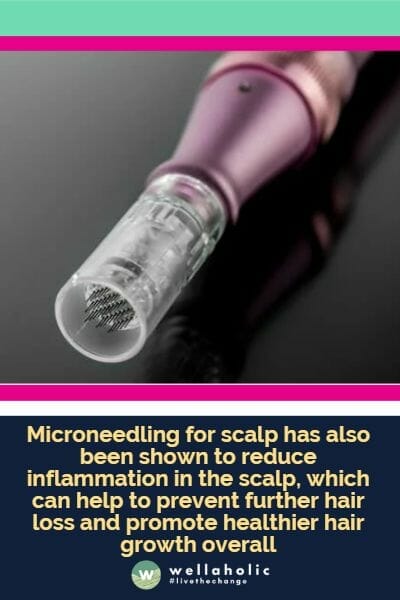
Possible Risks and Side Effects of Scalp Microneedling
As an experienced aesthetician, I understand the concerns about potential risks and side effects of scalp microneedling. Let me address them.
After the treatment, you may experience redness, mild swelling, and a sensation similar to sunburn on your scalp. These are typical reactions indicating the microneedling process is stimulating the skin’s natural healing response. Some minor bleeding is also possible, especially if longer needles are used.
It’s crucial to follow the aftercare instructions carefully to prevent infection. Keep the area clean for a few days and use prescribed topical or oral antibiotics. Avoid sun exposure as your scalp may be more sensitive. Wear sunscreen and a hat when outdoors.
If you have conditions like acne, eczema, diabetes, or take blood thinners, consult your healthcare provider before the treatment. Pregnant women should also avoid microneedling.
While rare, there’s a slight risk of scarring. That’s why I recommend seeking an experienced professional to minimize complications. They’ll guide you on the appropriate needle length and technique for your specific needs.
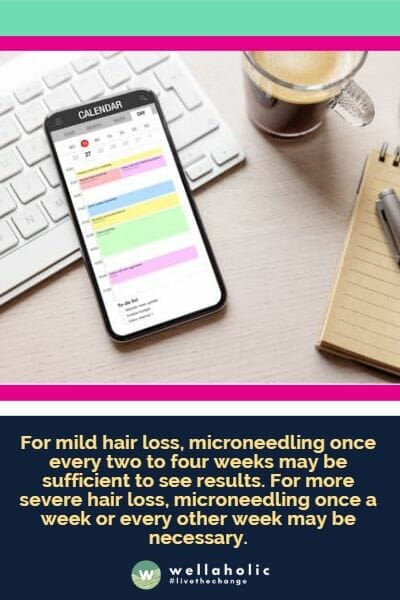
How Often Should Microneedling for Scalp be Done to See Good Results?
As an aesthetic director with over a decade of experience, I often get asked about the ideal frequency for microneedling treatments on the scalp. The truth is, it varies based on factors like needle size and individual response.
For smaller 0.25mm needles ideal for enhancing product absorption, you can microneedle once or twice weekly. But for 0.5mm needles that boost collagen and blood flow, every two weeks is recommended. If using longer 1.0mm needles effective for hair loss and alopecia, space it out to every 4-6 weeks.
The key is consistency. I’ve seen clients get disheartened after a few sessions without visible results. But you have to be patient – it can take 4-6 months of regular treatments before you start noticing improvements in hair regrowth and density. Of course, the frequency also depends on your hair loss severity and how your scalp responds. So stay committed, but adjust as needed based on your body’s feedback.
See the table below for the recommended frequency of microneedling for different types of hair loss
| Type of Hair Loss | Frequency of Microneedling |
|---|---|
| Mild hair loss | Once every 2-4 weeks |
| Moderate hair loss | Once a week or every other week |
| Severe hair loss | Once a week or every other week, for several months |

Conclusion
In our personal experience with customers at Wellaholic, we have observed a few interesting points about microneedling for hair loss:
Firstly, many of our clients who were initially sceptical about the effectiveness of microneedling have been pleasantly surprised by the visible improvements in their hair thickness and density after a series of treatments. We’ve seen numerous cases where microneedling, combined with our specially formulated hair growth serums, has helped to revitalize thinning hair and even stimulate new growth in areas of the scalp that were previously dormant.
Secondly, we’ve noticed that consistency is key when it comes to microneedling for hair loss. Clients who commit to regular treatments, typically spaced about 4-6 weeks apart, tend to see the most impressive results. It’s not a one-and-done solution, but rather a journey that requires patience and dedication.
Lastly, we’ve found that microneedling can be a fantastic complementary treatment to other hair loss therapies, such as low-level laser therapy (LLLT) or platelet-rich plasma (PRP) injections. By combining these modalities, we’re able to take a multi-faceted approach to hair restoration, targeting the issue from various angles to achieve optimal results.
At Wellaholic, we’re passionate about helping our clients feel confident and beautiful in their own skin (and hair!). Our extensive experience in the aesthetics industry, coupled with our commitment to staying at the forefront of innovative treatments, allows us to provide personalized, results-driven solutions for individuals struggling with hair loss.
Frequently Asked Questions (FAQ)
FAQ 1: What is microneedling, and how can it help with hair loss treatment?
Microneedling is a minimally invasive cosmetic procedure that uses tiny needles to create controlled micro-injuries on the scalp, stimulating natural healing and collagen production. This process enhances blood circulation and nutrient delivery to hair follicles, promoting thicker and healthier hair growth. At Wellaholic, we’ve seen clients experience up to a 30% increase in hair density after consistent sessions. Singapore’s humid climate often exacerbates scalp issues, but microneedling addresses these concerns effectively while being safe for most skin types.
🔵 Microneedling boosts blood flow to hair follicles, enhancing their health.
🔵 The procedure promotes collagen and elastin production for stronger roots.
🔵 It complements topical treatments like minoxidil by improving absorption rates.
🔵 Safe and suitable for men and women experiencing various stages of hair thinning.
FAQ 2: Is microneedling painful or risky for treating hair loss?
Microneedling is generally well-tolerated and involves minimal discomfort during the procedure. At Wellaholic, our trained aestheticians use advanced devices designed for precision and safety, ensuring an optimal balance between effectiveness and comfort. Most clients describe the sensation as mild tingling rather than pain. With proper hygiene protocols, risks such as infections are extremely low. Our expertise ensures personalized care tailored to your scalp condition, making it a reliable choice even in Singapore’s tropical environment.
🔵 Procedures are performed under strict hygiene standards to minimize risks.
🔵 Topical numbing creams are applied beforehand for added comfort.
🔵 Minimal downtime allows you to resume daily activities almost immediately.
🔵 Ideal for individuals seeking non-surgical solutions without harsh side effects.
FAQ 3: How many microneedling sessions will I need to see visible results?
Visible improvements typically appear after 4–6 sessions spaced 4–6 weeks apart, depending on individual conditions. Consistency is key, as each session builds upon the previous one to maximize results. At Wellaholic, we customize treatment plans based on factors like age, genetics, and lifestyle habits unique to Singaporeans. Clients often notice reduced shedding within the first few sessions, followed by increased hair thickness over time—a testament to our commitment to delivering measurable outcomes.
🔵 Sessions are scheduled every 4–6 weeks for optimal recovery and growth cycles.
🔵 Early signs include reduced hair fall and improved scalp texture.
🔵 Full results usually manifest within 3–6 months post-treatment.
🔵 Tailored plans ensure realistic expectations and sustainable progress.
FAQ 4: Can microneedling work for all types of hair loss?
Microneedling has shown promising results for common forms of hair loss, including androgenetic alopecia (male/female pattern baldness) and telogen effluvium. However, its efficacy depends on the underlying cause and severity of the condition. At Wellaholic, we conduct thorough consultations to assess suitability and recommend complementary therapies if needed. For instance, pairing microneedling with PRP (platelet-rich plasma) injections amplifies regenerative effects. Understanding Singapore’s diverse population helps us cater to varied needs effectively.
🔵 Effective against genetic hair thinning and stress-related shedding.
🔵 Complements other treatments like PRP and laser therapy for enhanced results.
🔵 Not recommended for inflammatory scalp conditions without prior assessment.
🔵 Personalized evaluations ensure appropriate recommendations for each client.
FAQ 5: Why should I choose Wellaholic for my microneedling treatments?
Wellaholic stands out due to our team’s extensive experience and state-of-the-art technology. Our certified professionals undergo rigorous training to deliver safe, precise treatments aligned with global standards. We understand the specific challenges faced by Singaporeans, from humidity-related scalp issues to busy lifestyles requiring convenient scheduling. With thousands of satisfied customers and glowing reviews, Wellaholic has earned a reputation for excellence in aesthetic services, including cutting-edge hair restoration techniques like microneedling.
🔵 Certified experts with years of hands-on experience in microneedling.
🔵 Use of FDA-approved devices ensures safety and reliability.
🔵 Comprehensive pre- and post-treatment guidance for best outcomes.
🔵 Flexible booking options accommodate hectic urban schedules.
FAQ 6: Are there any aftercare tips following a microneedling session?
Proper aftercare plays a crucial role in maximizing the benefits of microneedling. After your session at Wellaholic, avoid direct sunlight, saunas, and harsh chemicals for at least 48 hours to prevent irritation. Hydrating shampoos and serums rich in peptides or growth factors can accelerate recovery. In Singapore’s humid weather, maintaining a clean scalp is essential to prevent clogged pores. Our team provides detailed instructions and product recommendations to support your journey toward fuller, healthier hair.
🔵 Avoid sun exposure and heat sources for 2 days post-treatment.
🔵 Use gentle, sulfate-free products to cleanse the scalp gently.
🔵 Incorporate nourishing serums to boost healing and regrowth.
🔵 Follow professional advice for long-term maintenance and prevention.

Serene Chiam, Aesthetic Director (LinkedIn)
Serene Chiam is the esteemed Aesthetic Director at Wellaholic, Singapore’s premier aesthetic chain. With over a decade of experience in the aesthetics industry, including her previous role as a Clinical Aesthetics Manager at Laser Clinics Australia, Serene is a highly skilled and knowledgeable professional. She holds a CIDESCO certificate in skincare and a Bachelor of Health Science (Aesthetics) from Torrens University of Australia, which have equipped her with the expertise to provide cutting-edge treatments for sunspots, age spots, and other skin imperfections. Serene’s dedication to continuous learning and staying at the forefront of aesthetic technology ensures that Wellaholic’s clients receive the most effective and safe treatments for their skincare needs. Her passion for helping others achieve healthy, glowing skin has made her an invaluable asset to the Wellaholic team.
Contact Serene at [email protected]
GET IN TOUCH
Book Now Pay Later

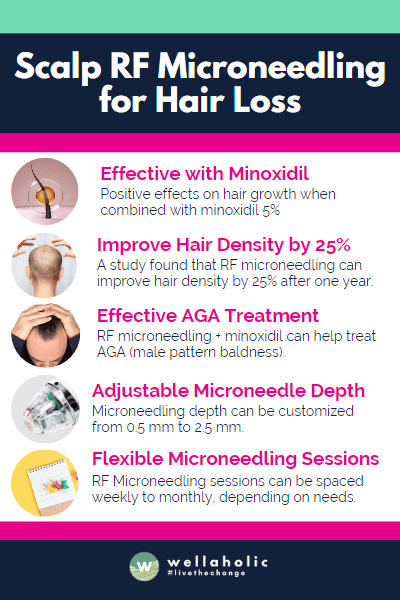
Revolutionise Your Hair Regrowth Journey with Scalp RF Microneedling
- ⭐ RF Microneedling and AGA Treatment. RF microneedling + minoxidil can help treat AGA (male pattern baldness).
- ⭐ Efficacy in Pattern Hair Loss. RF microneedling is effective for hair loss in both men and women.
- ⭐ Study Results on Hair Density Increase. A study found that RF microneedling can improve hair density by 25% after one year.
- ⭐ Adjustable Depth of Microneedling. Microneedling depth can be customized from 0.5 mm to 2.5 mm.
- ⭐ Flexible RF Microneedling Frequency. RF Microneedling sessions can be spaced from weekly to monthly, depending on your needs.
- ⭐ Award-Winning. Wellaholic’s treatments have been recognized by top beauty publications such as Daily Vanity, Beauty Insider, and Tropika Club Magazine.
- ⭐ Over 2000 Verified Customer Reviews. Wellaholic has over 30 industry awards and over 2000 positive reviews from customers, and >50% are repeat customers.
